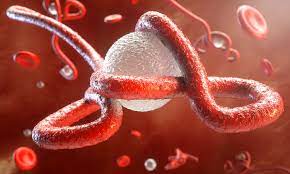The Ebola virus is a highly contagious and often deadly virus that belongs to the Filoviridae family. It was first identified in 1976 during two simultaneous outbreaks in Nzara, Sudan, and Yambuku, Democratic Republic of Congo (formerly Zaire). The virus is named after the Ebola River, near the site of the first recognized outbreak.
Ebola virus disease (EVD) is the illness caused by the Ebola virus. It primarily affects humans and nonhuman primates, such as monkeys, gorillas, and chimpanzees. The virus is transmitted to humans from wild animals and then spreads through human-to-human transmission.
Symptoms of Ebola virus disease typically start to appear between 2 to 21 days after exposure and include:
- Fever
- Fatigue
- Muscle pain
- Headache
- Sore throat
- Vomiting
- Diarrhea
- Rash
- Impaired kidney and liver function
- In some cases, internal and external bleeding
EVD can progress rapidly and can have a high mortality rate, with death occurring in severe cases. The virus spreads through direct contact with the blood, secretions, organs, or other bodily fluids of infected people, as well as surfaces and materials contaminated with these fluids.
The containment and management of Ebola outbreaks involve isolation of infected individuals, contact tracing, safe burial practices, and health education to prevent further spread. Additionally, experimental treatments and vaccines have been developed to help manage and prevent Ebola virus disease.
It’s important to note that my knowledge is based on information available up until September 2021. For the most current and accurate information about the Ebola virus and any recent developments, I recommend consulting reputable health organizations and news sources.



